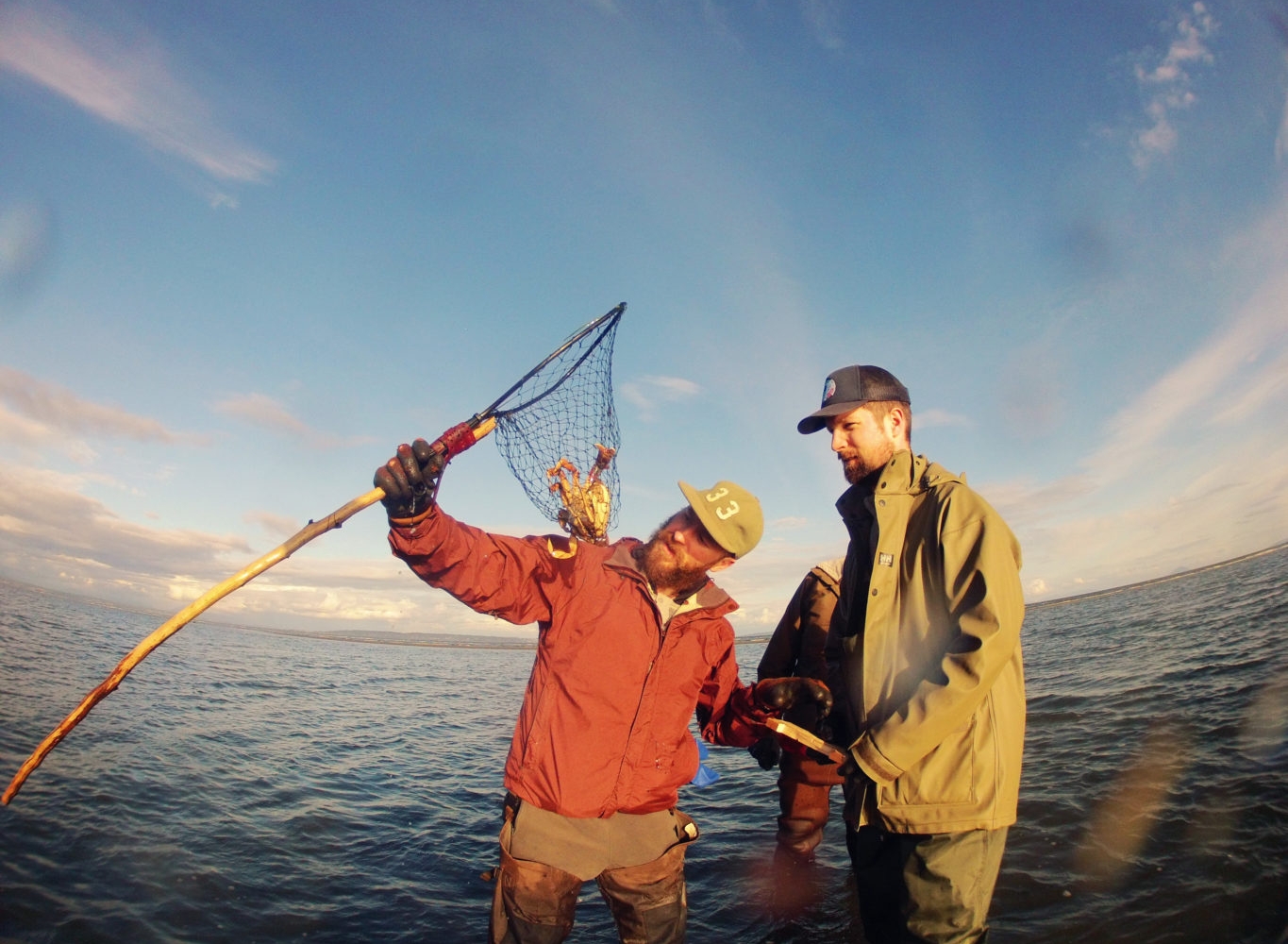I’ve lived on the west coast for a while now, and until recently had a very specific idea of what “going crabbing” means. I figured I’d need a boat, a few enormously heavy crab pots, a waterproof get-up, some serious skill, and a beard (though that part has been unconsciously influenced by Captain High Liner, and others who “catch” fish sticks).
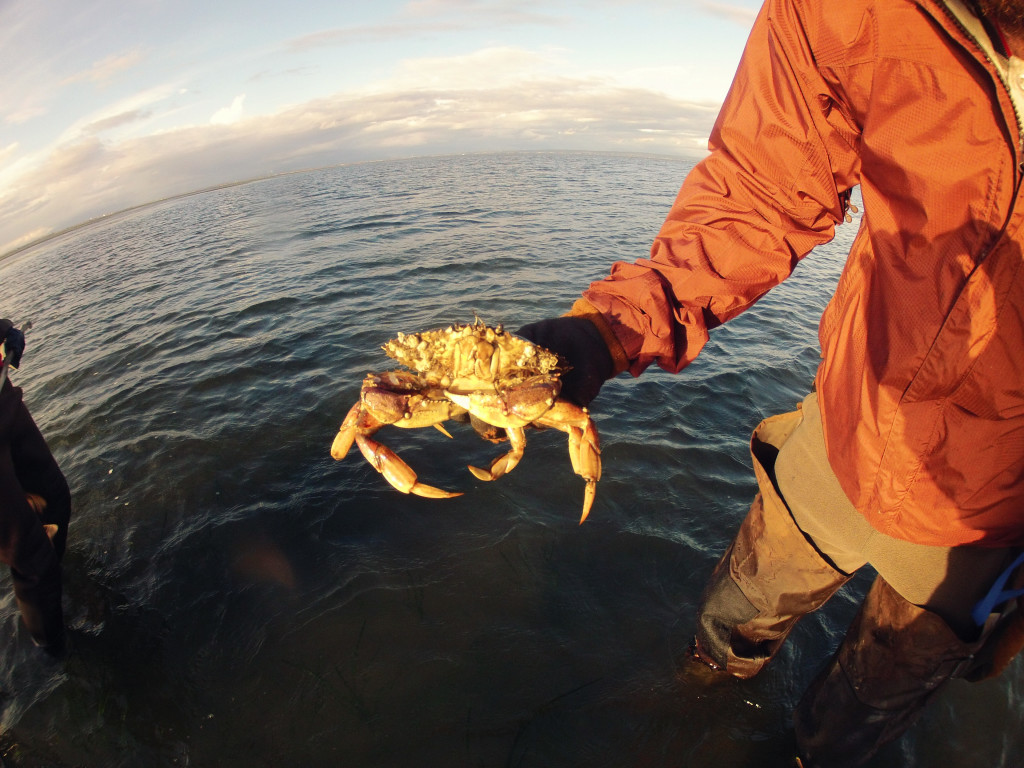
A fine west coast specimen.
As it turns out, I’ve got it all wrong. The crabs scrambling sideways through our Pacific waters aren’t just harvested by rubber clad captains. With some simple gear and the right fishing license, you too can be making crab cakes from your very own catch, no boat or crab pots required. Beards? They’re optional.
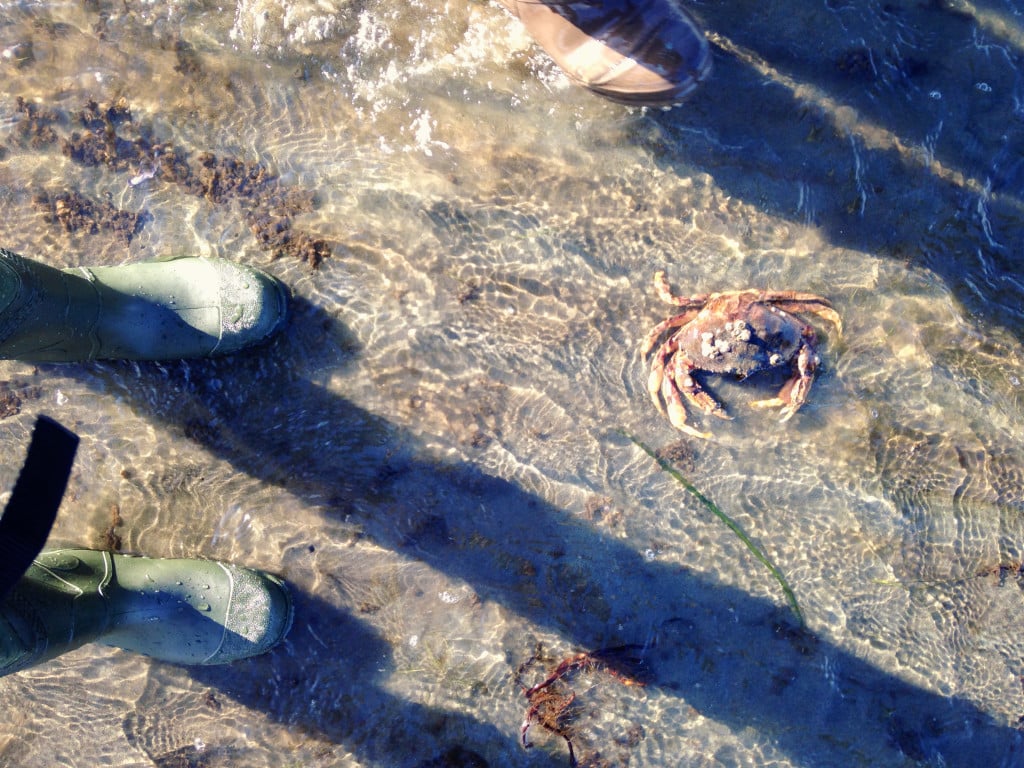
Crab shells at low tide.
Here’s what you’re going to need to go crabbing on the easy:
1) A Tidal Waters License
These can be purchased online here, and are only $5.51 (including tax) for the day. While you’re on the website, be sure to read up on Fisheries and Oceans Canada rules and regulations.
2) Hip waders
If you don’t own a pair or have a friend you can borrow some from, local shops like Pacific Angler rent them by the day.
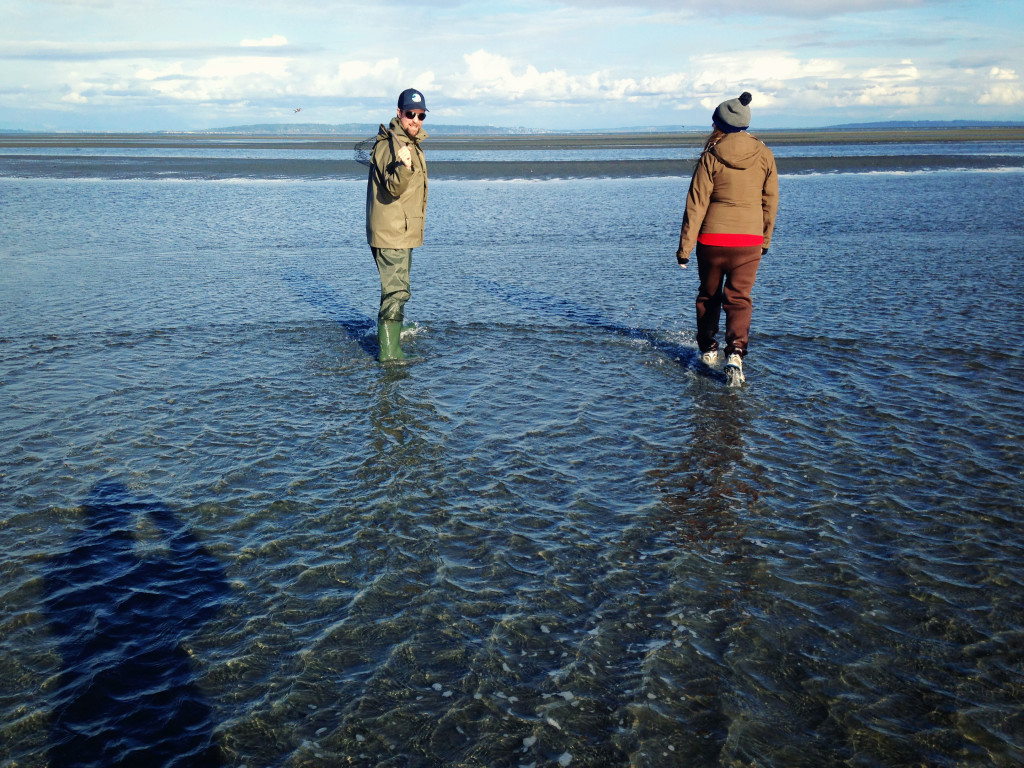
Heading out in hip waders at low tide.
Pack some warm socks to wear inside the boots, just in case you’re wading through particularly cold water, or the boots are a little too large.
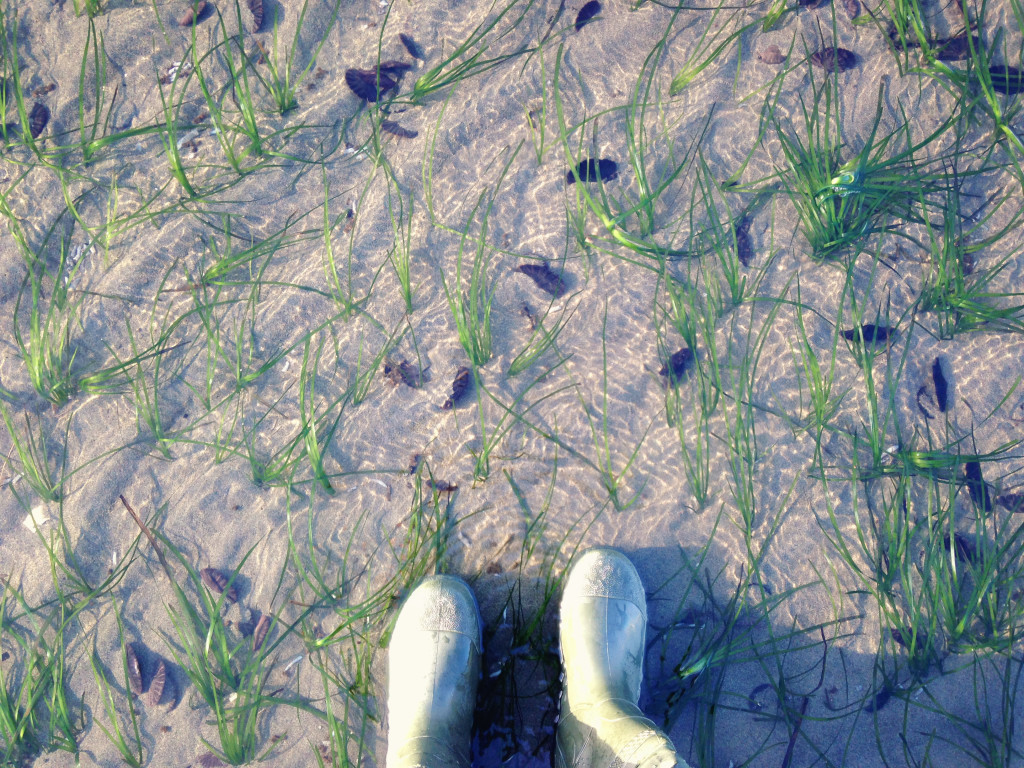
Sand dollars.
3) A salmon or trout landing net
This is an inexpensive piece of fishing gear, and while it’s better to use one with small holes rather than large ones (it makes it easier to shake crabs back into the water), any kind will do.
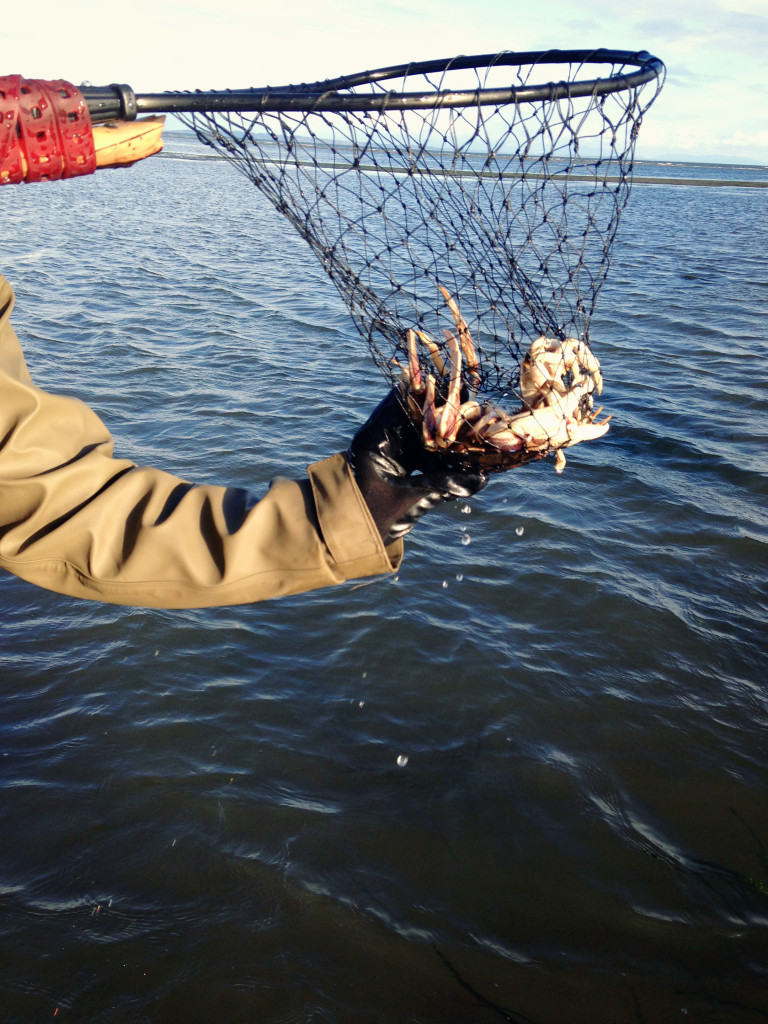
Scooping up crab.
You’ll want to extend the handle by about 1 metre (4 feet), so secure it to a hockey stick or a sturdy piece of found wood, like we did.
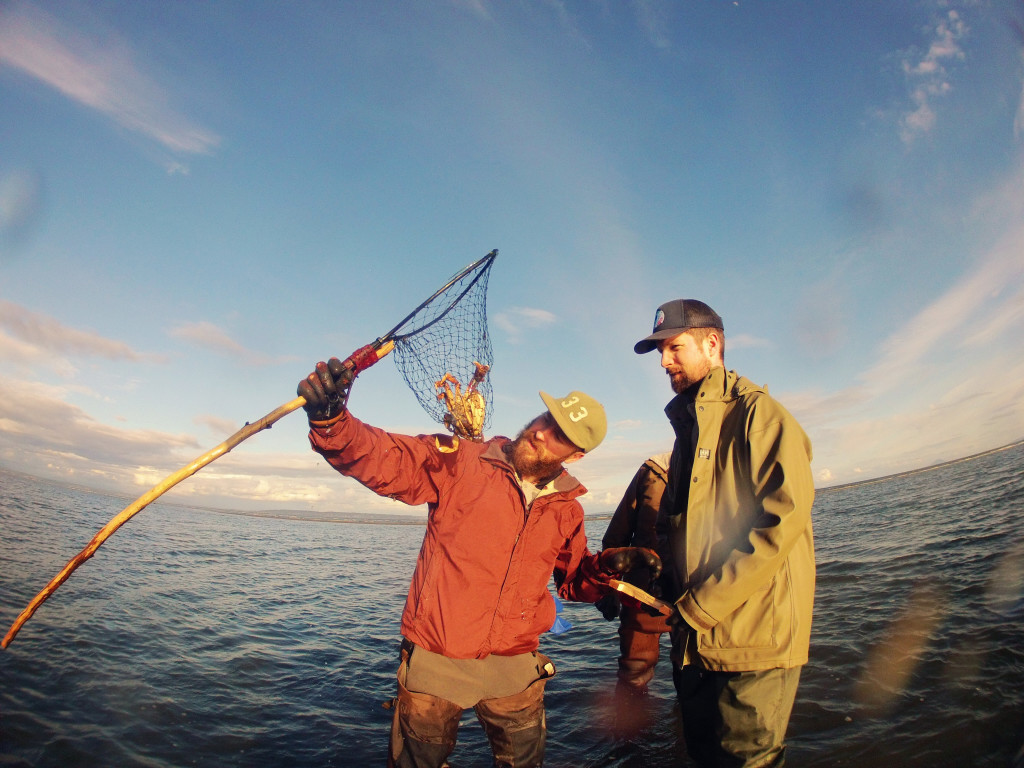
A freshly caught crab about to be measured.
4) A small cooler lined with newspaper and ice for storing your freshly-caught crabs.
5) A measuring stick
When crabbing, these are the rules to live by: you can only catch males (see how to identify them from the ladies here), and they must be at least 165 mm (6.5 inches) in width for dungeness or 115 mm (4.5 inches) in width for red rock. Accurate measurements are hugely important—this is no time to eyeball it—so make your own basic measuring stick by marking a length of 165 mm on a small piece of wood.
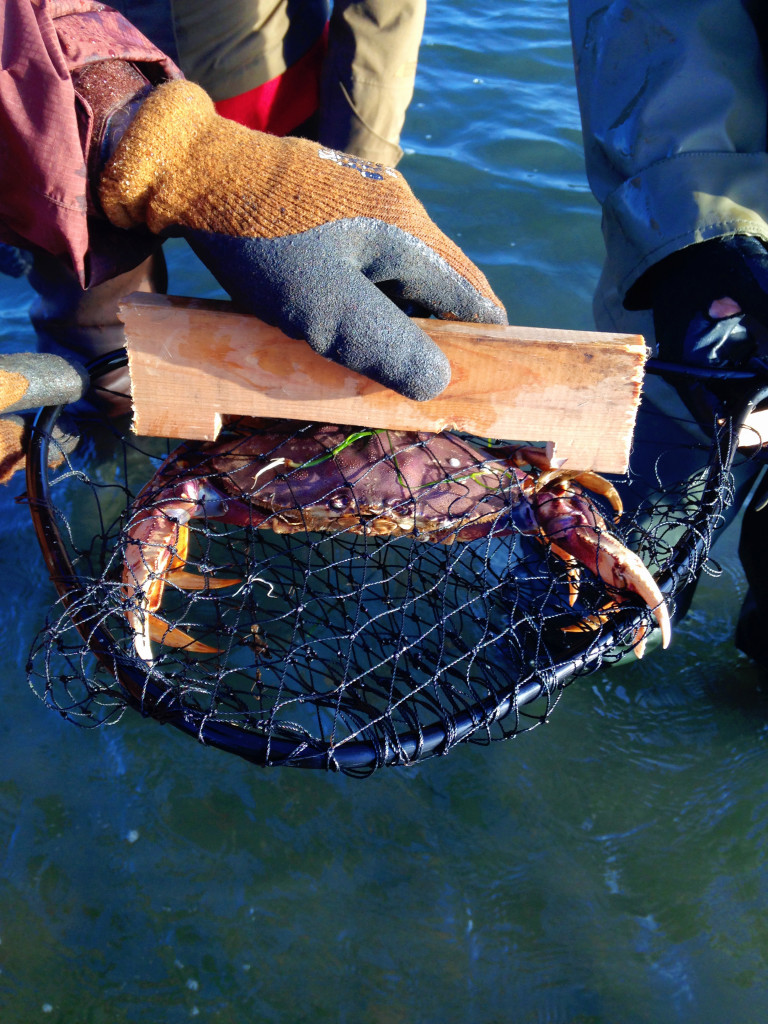
Measuring crab–just under the legal size.
Simply hold it up to the crab’s carapace (specific instructions here) to see if it’s large enough. If it is, throw it in your cooler! If it isn’t, get that sucker back into the water ASAP.
Now that you’ve got your gear sorted, the next question is, “But how to catch the crabs?” The answer: by heading to a place like White Rock Beach (50 km / 30 mi south of Vancouver) at low tide, wading carefully through the knee-deep water, and scanning with your eyes as you go. Look for a rust-coloured shell, a splay of white legs, or the slightest flicker of movement within seaweed.
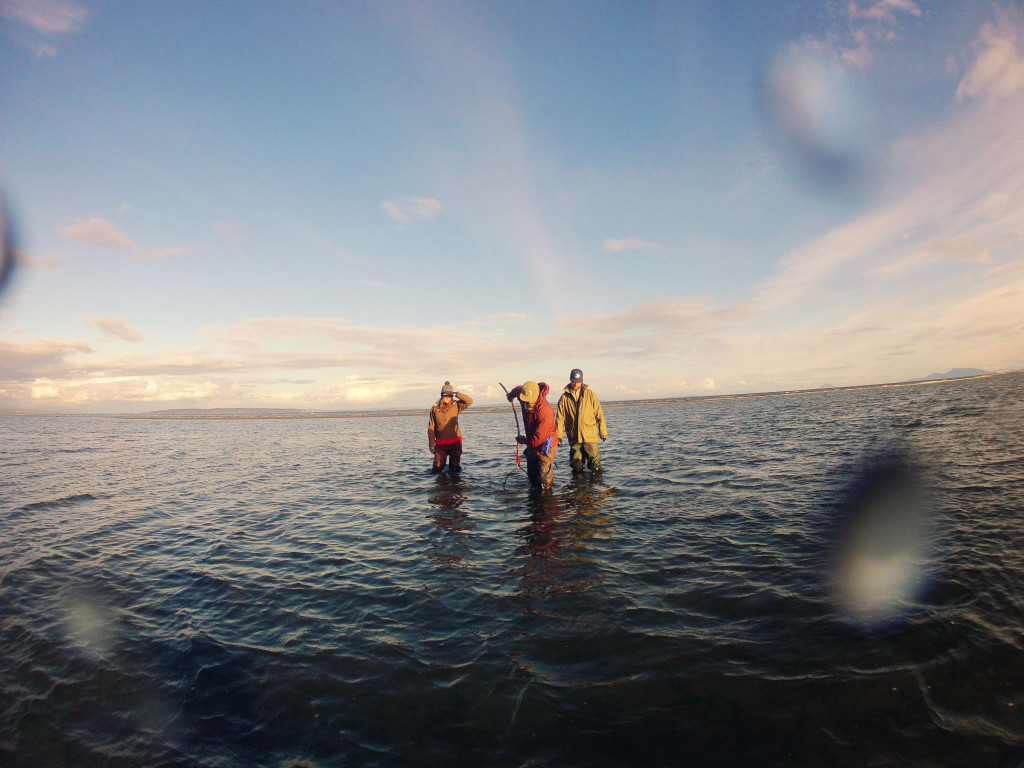
Crab wrangling.
It’s a slow and methodical process, and not for those who lack patience. But when you do spot a crab? You’ll feel a sense of achievement akin to spotting Sasquatch, I promise. At that point, you’ll either scoop up the crab with the net yourself, or shout for the person who’s holding it.
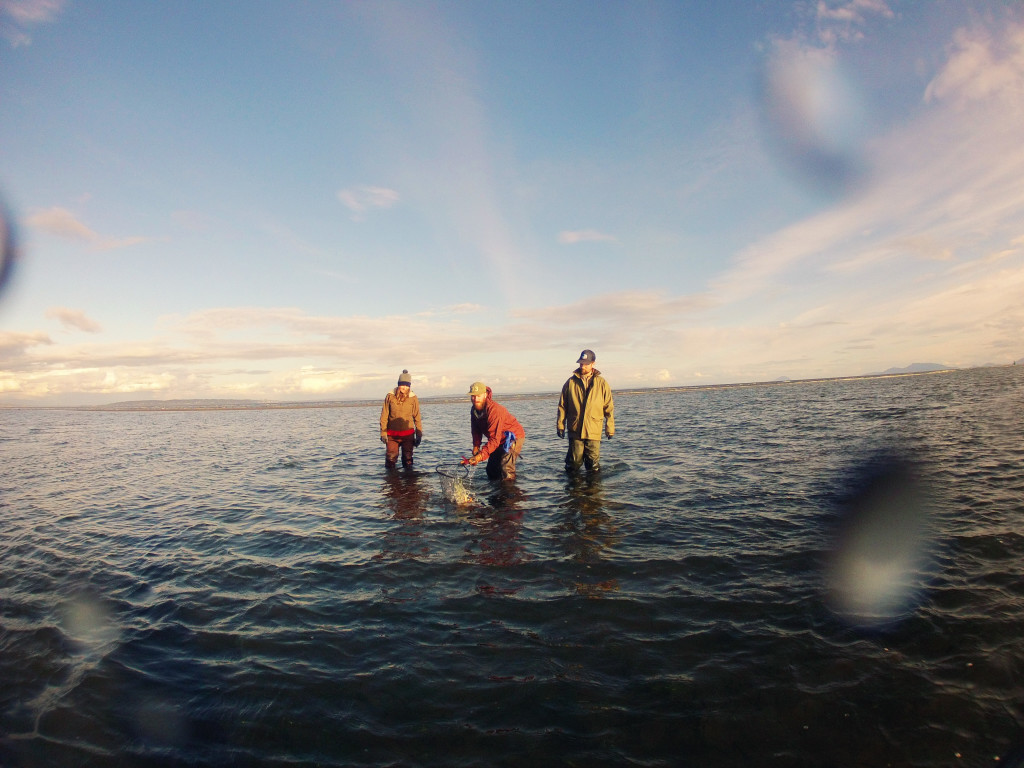
A crab in the net.
As you wait for them to reach you, you’ll watch that crab more intensely than you’ve ever watched anything in your life, shuffling from side to side with your arms out like a goalie–at least that’s what I did. It’s highly unlikely this stance helps, but it sure felt useful.
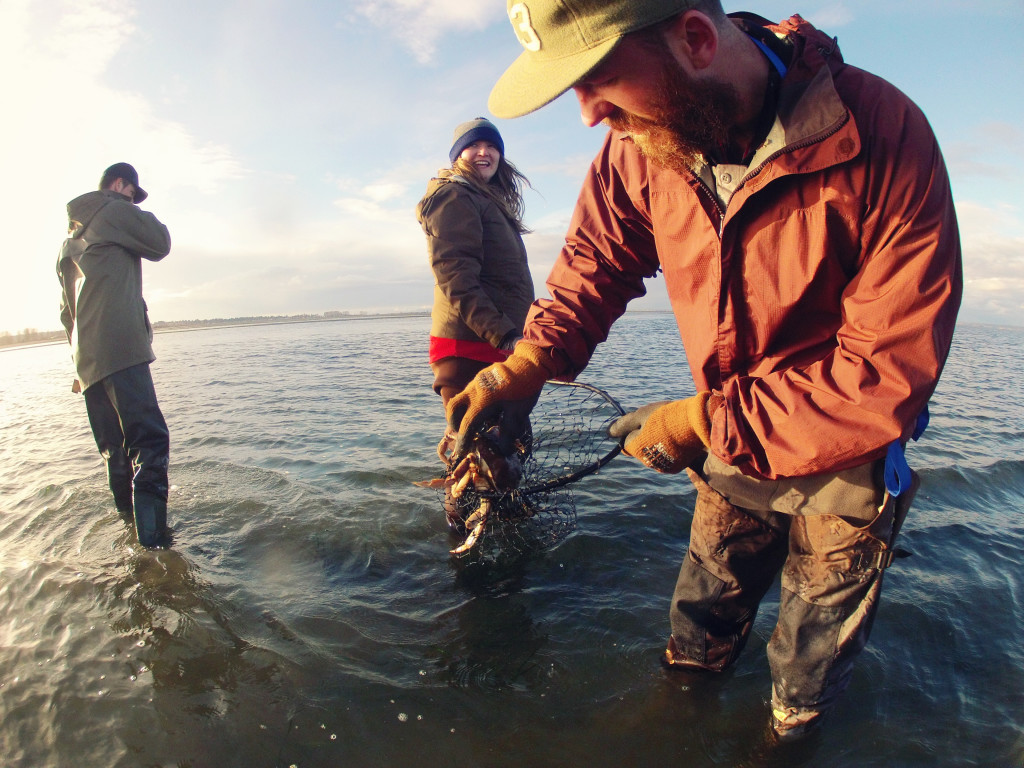
Releasing a crab.
Once the crab has been caught, measured, kept, or returned, you’ll start your meditative walk all over again. When you feel done for the day and/or have caught your limit, you can head home and cook yourself a crab feast with plenty of garlic butter.
**A note about the crabs pictured in this story: some are of legal size and others are not. All that were under the legal size were returned to the water!


